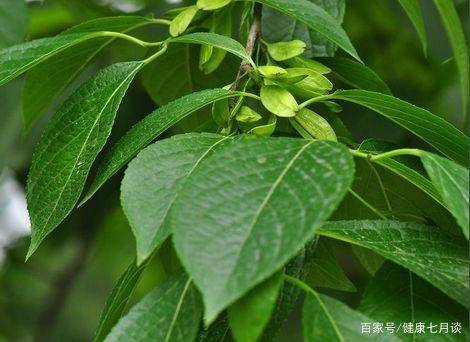Traditional Chinese medicine has mastered the use of various gifts of nature with great expertise, and since ancient times, Chinese medicine practitioners have been known for their longevity. Apart from their own knowledge of health and medicine, their adept use of various medicinal herbs also plays a significant role.
In recent years, drinking Eucommia tea has become popular in Japan, with a large annual import of Eucommia leaves from China. Many tea enthusiasts may have tried this. Why is Eucommia tea so highly favored? Let’s explore that today.
Eucommia sounds like a person’s name. It is also known as rubber tree, cottonwood bark, or silk cotton bark. It is a deciduous tree that can grow up to 20 meters tall and is cultivated in many regions of China.
It is a unique “tonic” Chinese medicine with recognized medicinal effects in China. As early as Li Shizhen’s “Compendium of Materia Medica,” the efficacy of Eucommia was recorded: for kidney deficiency causing lower back pain, damage to the kidneys from wind-cold, post-illness excessive sweating, virus elimination, athlete’s foot, accumulated wind-cold, and bleeding hemorrhoids. It is said to lighten the body and resist aging with prolonged use. Many Chinese medicine practitioners consider it as the top choice herb for improving male vitality and strengthening the knees, known as the “friend of men.” This means that besides following medical advice to consume Eucommia, men with kidney deficiency can also include Eucommia in their daily health regimen. For example:
Eating Eucommia with Chinese yam can strengthen the waist and relieve pain; consuming Eucommia with pig kidneys can tonify the liver and kidneys; combining Eucommia with sheep kidneys can nourish the kidneys, strengthen the waist, and solidify essence; pairing Eucommia with Cistanche can improve liver and kidney deficiencies and cold pain in the waist and knees; having Eucommia with Tribulus terrestris can alleviate back pain. Since the chemical composition of Eucommia leaves and bark is similar, their pharmacological effects are equivalent. They can be combined with the mentioned ingredients for tea preparation or soup making.
During the autumn supplementing season, making a soup with Eucommia, walnuts, and pork ribs can be a good kidney-nourishing diet therapy:
Method: Take appropriate amounts of walnut kernels, Eucommia bark or leaves, fennel seeds, and pork ribs. Firstly, crush the walnut kernels, Eucommia bark (or leaves), and fennel seeds and wrap them in a piece of gauze. After boiling the pork ribs, add the wrapped ingredients and then simmer over low heat for an hour.
The walnut kernels in this soup are beloved nuts known for replenishing the kidneys and solidifying essence, traditionally called “longevity fruits” or “longevity nuts.” “Medical Revelations of the Medical Heritage” says: “Walnuts nourish the liver and kidneys, strengthening the tendons and bones, and are effective for treating back and leg pain.” Fennel seeds are not only a commonly used seasoning but also a good kidney-nourishing ingredient. When combined, their kidney-reinforcing effects should not be underestimated.
In addition, many men prefer medicinal wine. By combining medicine with alcohol, the medicinal properties are enhanced. Alcohol can supplement the kidneys more effectively. Take appropriate amounts of the three mentioned herbs, crush them, wrap them in gauze, submerge them in 1000 ml of white wine in a container, and let it soak for half a month. Consume a small cup twice a day, but do not overindulge.
It should be noted that this walnut and Eucommia wine primarily addresses kidney yang deficiency. If symptoms include dry mouth, restlessness, and warm palms in addition to backache and weak legs, this indicates kidney yin deficiency. In that case, a kidney yin-nourishing diet therapy should be sought, as we have also made several recommendations in previous articles.


